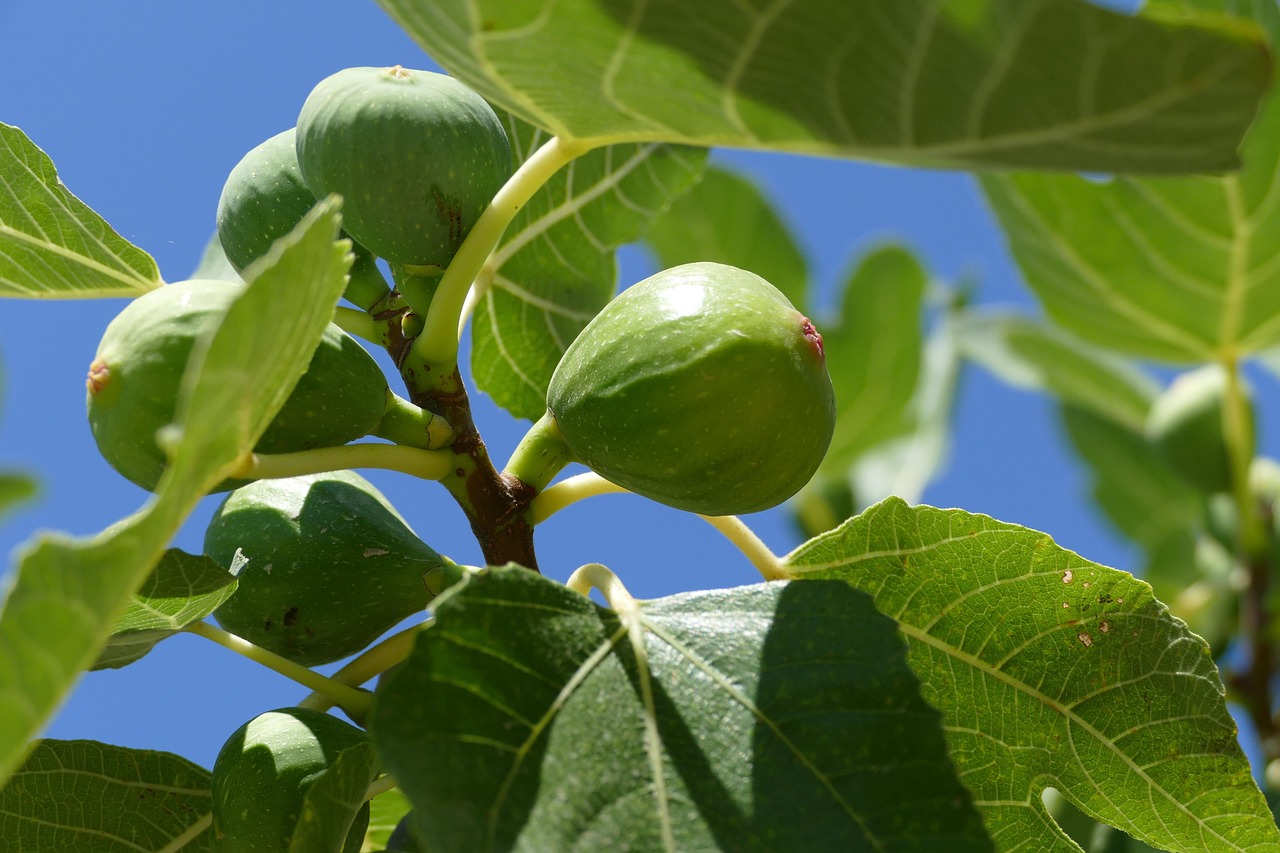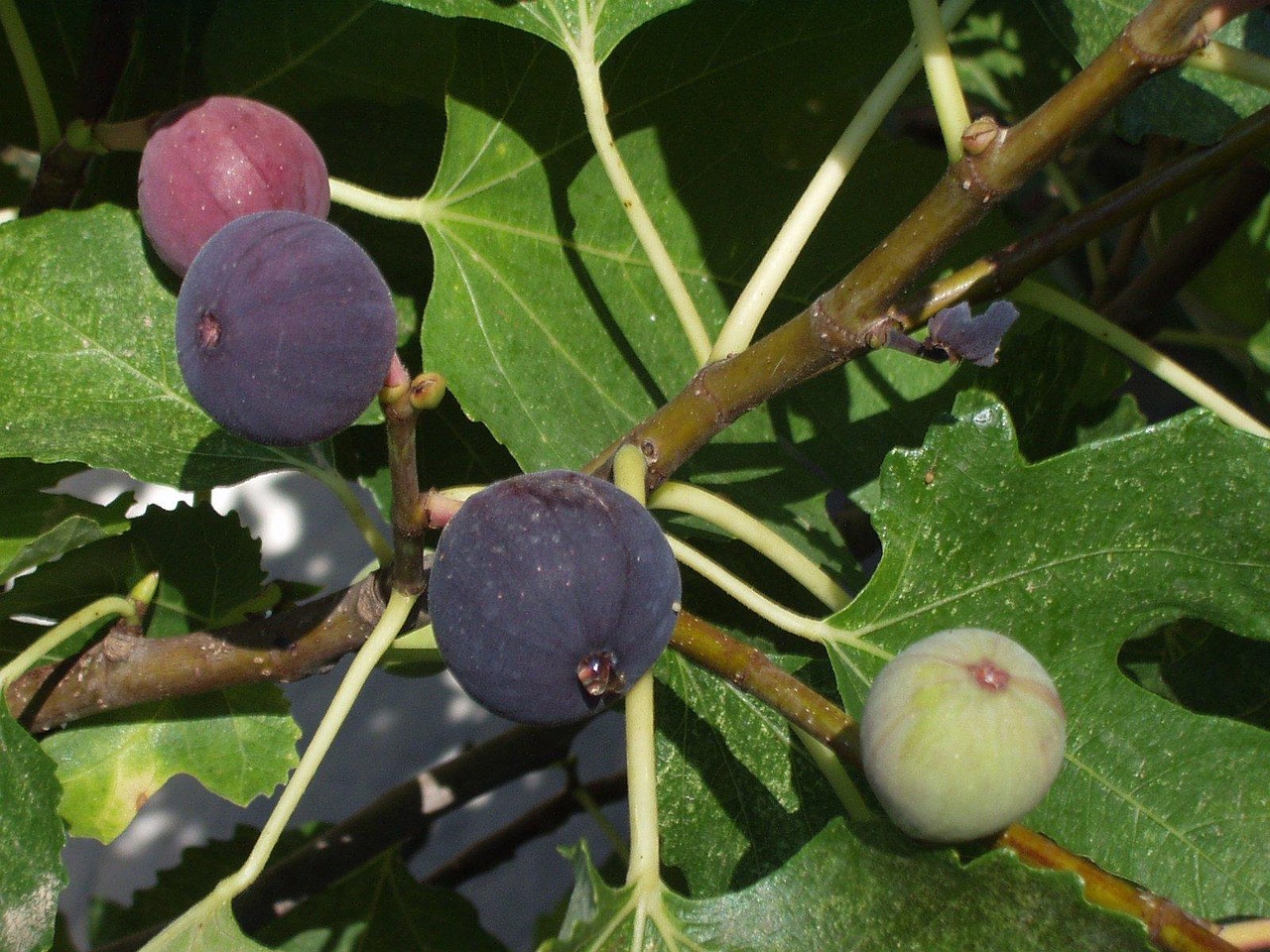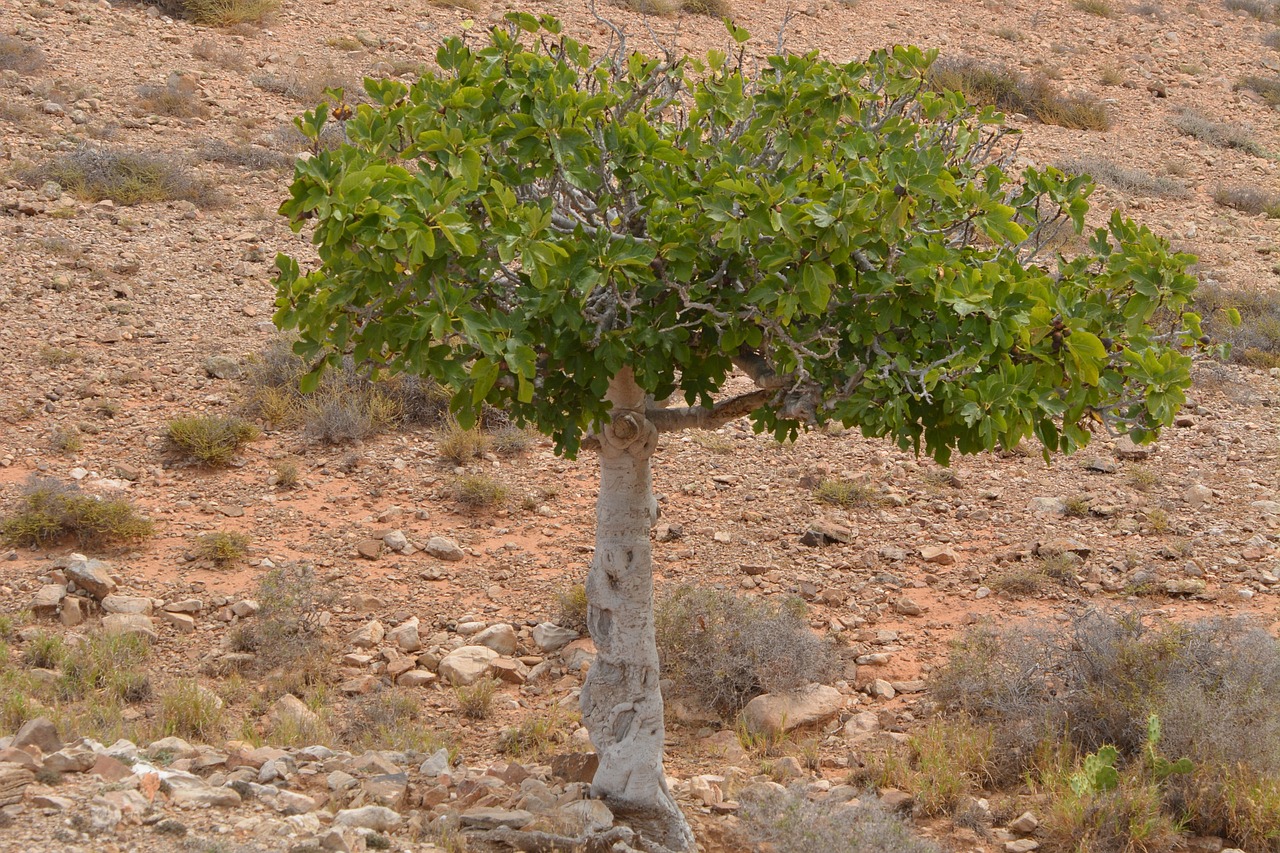The growth rate of fig trees in backyard cultivation typically ranges from 12 to 24 inches per year, depending on factors like climate, soil quality, and care practices.
Fig trees are popular choices for home gardens due to their sweet fruit and attractive foliage. Understanding their growth rate is essential for gardeners who wish to maximize their yields and ensure healthy trees. Fig trees, scientifically known as Ficus carica, thrive in warm climates and can produce fruit within a couple of years after planting. However, their growth rate can vary significantly based on several conditions.

Several factors influence how quickly fig trees grow. These include the variety of fig tree, the planting conditions, and the care provided. In general, fig trees prefer well-draining soil, plenty of sunlight, and adequate water without overwatering. This section will explore these factors in greater detail.
Factors Influencing Fig Tree Growth Rate
Understanding the factors that affect fig tree growth can help you cultivate healthy trees in your backyard. The primary influences include:
- Climate: Fig trees flourish in warm, dry climates. They are most productive in USDA Hardiness Zones 8-10.
- Soil Quality: Well-draining soil is crucial. Soil that retains too much moisture can lead to root rot, hindering growth.
- Sunlight: Fig trees require full sun for optimal growth. Aim for at least six hours of direct sunlight daily.
- Watering: Consistent watering is vital. However, excessive moisture can impede growth.
- Fertilization: Providing the right nutrients can enhance growth rates. Organic fertilizers often yield the best results.
To further illustrate the impact of these factors, a brief overview of common fig tree varieties and their growth characteristics is helpful. Different varieties may have different growth rates and fruiting habits.

| Fig Variety | Average Growth Rate (inches/year) | Fruit Characteristics |
|---|---|---|
| Black Mission | 12-18 | Sweet, dark purple fruit with a rich flavor. |
| Brown Turkey | 18-24 | Sweet, brownish-purple fruit; reliable producer. |
| Kadota | 12-18 | Greenish-yellow skin with a mild flavor; great for drying. |
| Celeste | 12-20 | Small to medium-sized sweet fruit; excellent for fresh eating. |
The table above outlines some common fig varieties, their average growth rates, and characteristics of their fruit. Choosing the right variety for your region and gardening style can significantly impact your success in cultivating fig trees.
In addition to selecting the right variety, proper maintenance practices can enhance growth rates. Regular pruning can stimulate new growth while removing dead or diseased branches. This practice not only encourages a more vigorous growth pattern but also improves air circulation around the tree.
Pest management is another crucial aspect of fig tree care. Common pests such as aphids and spider mites can hinder growth if left unchecked. Implementing integrated pest management strategies can keep your fig trees healthy and growing at an optimal rate.

Finally, understanding the seasonal growth patterns of fig trees can help gardeners anticipate their care needs. Fig trees typically experience rapid growth in spring and summer, with fruit development occurring during these warmer months. In fall, the trees prepare for dormancy as temperatures drop.
By being mindful of these factors and adopting suitable cultivation practices, gardeners can facilitate robust growth and enjoy the rewards of homegrown figs.
Optimal Conditions for Fig Tree Growth
To achieve the best growth rates for fig trees in your backyard, it is essential to create optimal growing conditions. This section will discuss specific requirements such as soil type, water needs, and sunlight exposure. Each of these elements plays a crucial role in the overall health and productivity of fig trees.
Soil Requirements
Fig trees thrive in well-draining soil that is rich in organic matter. The preferred soil types include sandy loam or loamy soils. Here are the key characteristics of ideal soil for fig tree cultivation:

- Drainage: Good drainage prevents root rot and promotes healthy growth.
- pH Level: A slightly acidic to neutral pH (6.0 to 7.0) is ideal for fig trees.
- Nutrient Content: High organic matter content supports robust root development.
Before planting, it can be beneficial to conduct a soil test. This test will provide information about nutrient levels and pH, helping you amend the soil accordingly.
Watering Needs
Watering is vital for the growth of fig trees, especially during their early years. However, overwatering can be detrimental. Here are practical tips to manage watering effectively:
- Establish a Schedule: Water young trees once a week, allowing the soil to dry out slightly between waterings.
- Monitor Weather Conditions: Adjust watering frequency based on rainfall and temperature.
- Avoid Water Logging: Ensure the soil drains well to prevent standing water.
During hot summer months, fig trees may require more frequent watering. Always check the top inch of soil; if it feels dry, it is time to water.
Sunlight Exposure
Fig trees flourish in full sun. A minimum of six hours of direct sunlight each day is necessary for optimal growth and fruit production. Here are some considerations for sunlight exposure:
- Choose the Right Location: Plant fig trees in a spot that receives ample sunlight throughout the day.
- Avoid Shaded Areas: Ensure no nearby structures or trees cast shadows on your fig tree.
- Consider Heat Reflection: Planting near reflective surfaces can enhance warmth and light exposure.
Sufficient sunlight not only boosts growth rates but also contributes to better fruit quality. Figs that receive adequate light tend to be sweeter and more flavorful.
Common Fig Tree Diseases and Their Impact on Growth
Caring for fig trees involves being vigilant about potential diseases that could affect growth rates. Identifying and managing these diseases early can prevent significant damage. Below are some common diseases that affect fig trees:
| Disease | Symptoms | Treatment |
|---|---|---|
| Fig Rust | Orange pustules on leaves; leaf drop. | Fungicides and removing infected leaves. |
| Root Rot | Wilting leaves; stunted growth; brown roots. | Improve drainage; avoid overwatering. |
| Bacterial Blight | Dark spots on leaves; wilting branches. | Pruning affected areas; applying copper fungicides. |
Monitoring your fig tree regularly can help you catch these diseases early. Implementing good cultural practices, such as proper spacing and airflow, can reduce disease incidence.
Pest Management Strategies for Fig Trees
Pests are another factor that can hinder the growth rate of fig trees. Identifying pests early is crucial for maintaining tree health. Here are some common pests and strategies to manage them:
- Aphids: Tiny insects that suck sap from leaves. Use insecticidal soap or neem oil to control their population.
- Spider Mites: These pests thrive in hot, dry conditions. Regularly misting the leaves can deter them, along with insecticidal soap if necessary.
- Fig Beetles: These beetles can damage fruit. Handpicking or using traps can be effective control methods.
Regular inspections of your fig trees will help in early detection of pests. Encouraging beneficial insects, such as ladybugs, can also assist in keeping pest populations under control.
By focusing on optimal conditions, disease management, and pest control, gardeners can ensure their fig trees grow at healthy rates and produce abundant fruit. Understanding these aspects contributes significantly to successful backyard cultivation of fig trees.
Harvesting Figs: Timing and Techniques
Harvesting is a critical phase in fig tree cultivation. Knowing when and how to harvest figs can significantly affect the quality of the fruit and overall satisfaction. This section will cover the timing of the harvest, techniques for picking figs, and tips for storing them properly.
When to Harvest Figs
The timing of the harvest largely depends on the variety of the fig tree and local climate conditions. Here are some general guidelines:
- Color Change: Figs typically change color as they ripen. For instance, Black Mission figs turn dark purple, while Kadota figs become a pale yellow-green.
- Softness: Ripe figs should yield slightly to gentle pressure. If they feel firm, they are not yet ready to be picked.
- Ease of Detachment: Mature figs will often fall off the tree with little resistance. If you have to tug hard, they are not yet ripe.
In general, figs are ready for harvest in late summer to early fall, although this can vary based on your location and specific fig variety. Observing your trees regularly will help you identify the right time to pick.
Harvesting Techniques
Proper harvesting techniques can help preserve the quality of figs and minimize damage to the tree. Follow these steps for effective harvesting:
- Use Clean Tools: Always use clean, sharp scissors or pruners to avoid transmitting diseases.
- Handle with Care: Gently twist or cut the stem near the fruit. Avoid pulling on the fruit itself, as this can cause bruising.
- Pick in the Morning: Harvest figs in the morning when temperatures are cooler. This reduces stress on the fruit and tree.
After harvesting, it is crucial to handle figs delicately, as they are prone to bruising and spoilage. Place them in a soft container to prevent damage.
Storing Fresh Figs
Fresh figs have a short shelf life, so proper storage is essential for maintaining their quality. Here are some storage tips:
- Refrigeration: Store fresh figs in the refrigerator if you do not plan to eat them immediately. Place them in a breathable container, such as a paper bag or a shallow dish lined with paper towels.
- Avoid Washing: Do not wash figs until you are ready to eat them, as moisture can promote mold growth.
- Freezing Options: If you have an abundance of figs, consider freezing them. Wash, dry, and slice them before placing them on a baking sheet to freeze individually. Once frozen, transfer them to airtight containers or freezer bags.
Proper storage techniques can extend the freshness of your figs for a few days in the refrigerator or several months in the freezer.
Fig Tree Growth Rate Influenced by Pruning
Pruning is another vital practice that can significantly influence fig tree growth rates and overall health. Understanding how and when to prune your fig trees can enhance their productivity and longevity.
The Importance of Pruning
Pruning serves several purposes in fig tree cultivation:
- Encourages New Growth: Pruning stimulates new growth, leading to a more productive tree.
- Improves Air Circulation: Thinning out crowded branches allows better airflow, reducing disease risk.
- Shapes the Tree: Pruning helps maintain an attractive shape that makes harvesting easier.
When and How to Prune Fig Trees
The best time to prune fig trees is during their dormant season, typically in late winter or early spring before new growth begins. Here are some practical steps for effective pruning:
- Remove Dead or Diseased Wood: Cut away any branches that show signs of disease or damage.
- Thin Out Crowded Areas: Remove branches that cross each other or grow inward to improve airflow.
- Shorten Long Branches: Trim back overly long branches to encourage bushier growth.
A well-pruned fig tree can produce fruit more efficiently and grow at an optimal rate. Regular maintenance will lead to healthier trees and a more abundant harvest.
Understanding Fig Tree Varieties
The growth rate of fig trees can vary significantly among different varieties. Exploring various types can help you choose the best fit for your garden and climate conditions. Below is an overview of several popular fig varieties:
| Fig Variety | Growth Rate (inches/year) | Description |
|---|---|---|
| Smyrna | 12-24 | Larger fruit; requires pollination from wasps; ideal for warm climates. |
| Agen | 12-18 | Known for its rich flavor; produces small to medium-sized fruit. |
| Dallas Red | 18-24 | Resilient variety; produces sweet red fruit; great for warmer regions. |
Selecting the right variety based on your climate and personal preferences can greatly enhance your fig gardening experience. Different varieties may also offer unique flavors and textures, contributing to a diverse harvest.
By understanding the key aspects of harvesting, pruning, and selecting fig varieties, gardeners can cultivate thriving fig trees that provide delicious fruit for years to come.
In addition to the factors discussed, the overall environmental conditions play a vital role in determining the growth rate of fig trees. For instance, fig trees are sensitive to frost and may not thrive in regions with cold winters. Understanding your local climate can help you choose varieties that will flourish in your backyard. Additionally, gardeners should consider planting their fig trees where they will receive protection from harsh winds and extreme weather conditions.
Fertilization and Its Impact on Growth Rate
Fertilizing fig trees appropriately can significantly enhance their growth rates. While figs are relatively low-maintenance, providing them with necessary nutrients can lead to healthier trees and better fruit production. Here are some key points regarding fertilization:
- Initial Fertilization: When planting young fig trees, incorporate compost or well-rotted manure into the planting hole to provide a nutrient-rich start.
- Annual Fertilization: During the growing season, applying a balanced fertilizer (such as a 10-10-10 NPK) can support growth. Follow the manufacturer’s recommendations for dosage.
- Organic Options: Organic fertilizers, such as fish emulsion or seaweed extract, can promote healthy growth while maintaining soil health.
Over-fertilization should be avoided, as this can lead to excessive leaf growth at the expense of fruit production. Monitoring the growth of your trees and adjusting the fertilization schedule accordingly is crucial.
Companion Planting with Fig Trees
Companion planting can also influence the growth and health of fig trees. Certain plants can enhance growth conditions, deter pests, or improve soil quality. Consider these companion plants:
- Basil: Known to repel common pests, basil can grow well alongside fig trees and enhance their flavor.
- Marigolds: These flowers deter nematodes and other pests, providing a protective barrier for fig trees.
- Leguminous Plants: Plants like clover can enrich the soil with nitrogen, benefiting nearby fig trees.
Integrating companion plants into your fig tree garden can create a more balanced ecosystem, promoting overall health and productivity.
Understanding Fig Tree Lifespan and Longevity
Fig trees are known for their longevity. With proper care, a fig tree can live for several decades, producing abundant fruit throughout its life. Understanding the lifespan of your fig tree is essential for planning maintenance and care over the years.
- Mature Trees: Fig trees generally reach maturity within 3 to 5 years of planting, where they start producing fruit regularly.
- Peak Production: After reaching maturity, fig trees often yield high-quality fruit for 15 to 20 years.
- End of Life: Even after peak production, many fig trees can continue to produce fruit for 30 years or more with proper management.
A well-cared-for fig tree not only provides delicious fruit but also contributes to the beauty of your garden for many years.
Conclusion
Cultivating fig trees in your backyard can be a rewarding experience, offering both aesthetic appeal and delicious fruit. Understanding the growth rate and factors influencing it—such as soil conditions, watering practices, sunlight availability, and pest management—are key components to successful cultivation. Selecting the right variety based on your local climate ensures that you will enjoy healthy trees that thrive in your environment.
Additionally, incorporating practices like pruning, fertilizing, and companion planting can enhance growth rates and fruit production. By fostering optimal conditions and understanding the unique needs of your fig trees, you can achieve a bountiful harvest every season.
With patience and care, backyard gardeners can cultivate flourishing fig trees that not only provide sweet fruits but also enrich their gardening experience for years to come. Whether you’re a seasoned gardener or just starting out, figs are an excellent addition to any home garden.
